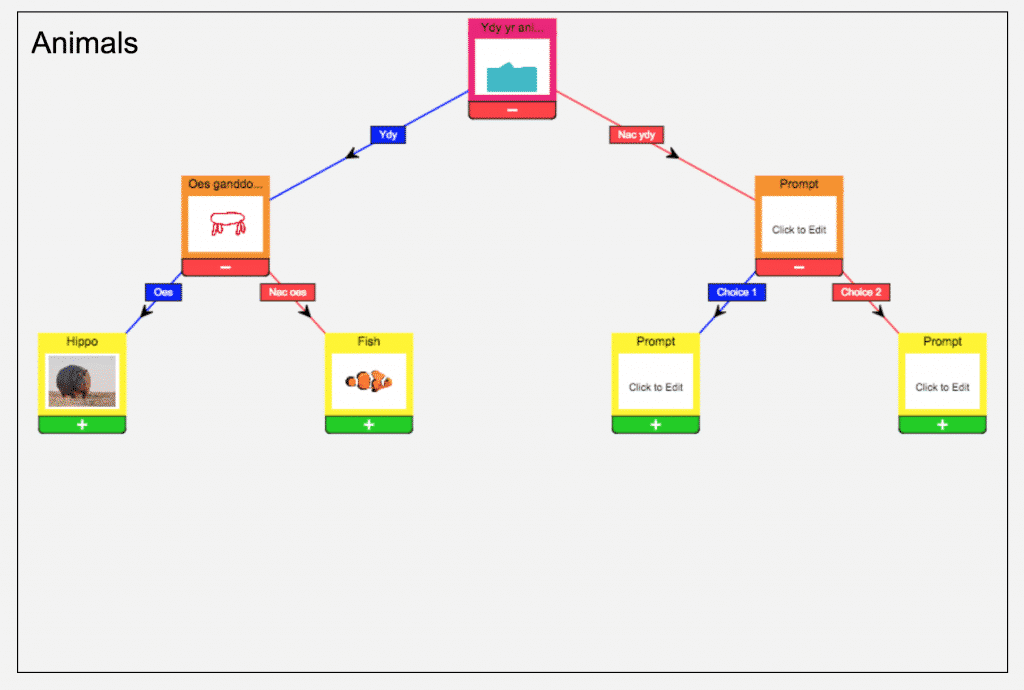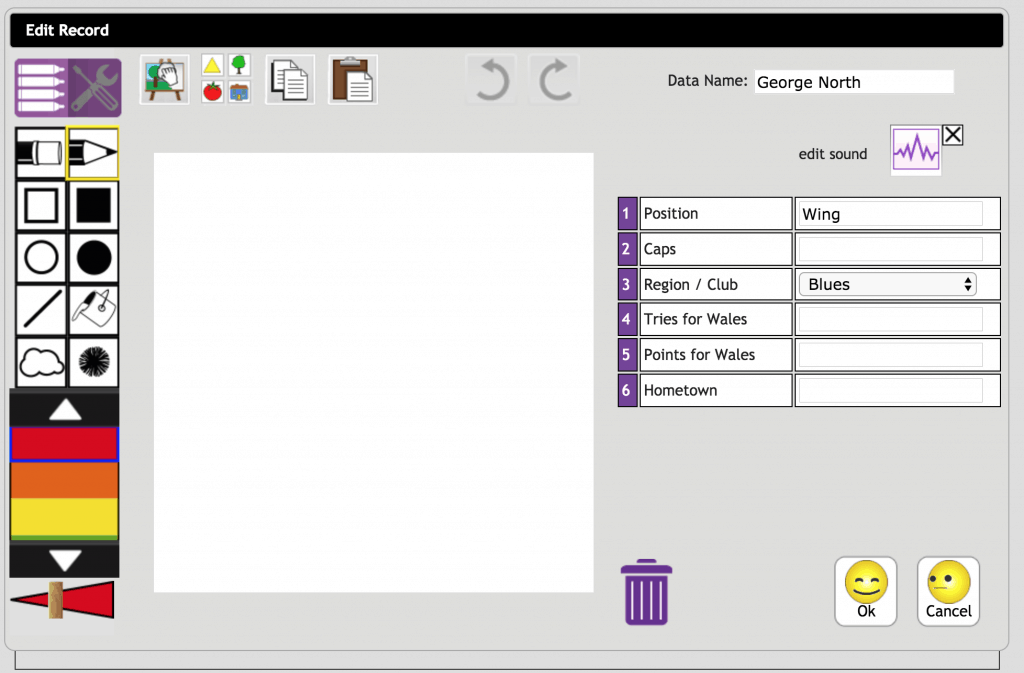Databases
4.2 - Data and Information Literacy
Activity 1
Questions for a Branching Database

The first type of databases, Branching Databases, will be familiar to most pupils from their Year 3 tasks. Branching Databases are a way of sorting and classifying groups of objects by asking Yes/No questions. Each answer leads to a further question until only one object remains.
They key to a good branching database is selecting the questions that are most effective at separating the possible answers. This activity helps practise that skill.
Prepare:
- Prepare a simple branching database with 8 possible answers. For this example we'll use animals, on J2Data (J2E) or 2Question (Purple Mash).
Activity Tasks:
- Show images of the eight animals that are in your example branching database. Ask one pupil to select an animal and show it to the class but not to you. Ask the questions on the branching database to reach the correct animal.
- Repeat the above example, or even better display the database on the screen and let pupils play in pairs.
- Point out that your first question splits the eight into two sets of four. Then there are further questions to split those fours into pairs and then into individual answers.
- Show images of four other animals, ask pupils to think-pair-share a question that would split them into two pairs. Repeat with four more animals.
- Ask pupils what types of questions we could use to separate different fruit and veg? (Is it fruit? Is it green? Does it come in bunches? Does it grow underground?)
- Remind the pupils how to log into their Branching Database software (J2Data or 2Question), show them eight images of different fruit and vegetables and ask them to make a branching database for them. (They should know how to do this from Year 3, but remind them if needed).
- Let pupils play each other's branching database.
Remember
- If your school hasn't adopted Purple Mash or J2E yet, it's about time they did. J2E is free through Hwb whilst Purple Mash can be obtained with a paid subscription. Bring this up with your Technology Leader or Head as soon as possible!
- This activity can be done without technology, using pictures of cards and writing down questions. You will still be achieving the Framework element.
Activity 2
A Mountain of Errors
The final activity is for the pupils to add records to a digital database, amend them and delete them. This activity is very simple, but requires a bit of preparation. There is a shortcut available in Purple Mash for teachers who aren't confident (see variation ideas).

Prepare:
- Ensure that the pupils have login accounts for a database software (Purple Mash or J2Data)
- Create a Welsh mountain database in 2Investigate or J2Data including fields for Name, Height, County, North or South Wales, Mountain Range.
- Add a correct record for a couple of mountains, then a record for Snowdon with incorrect details, then a record for Ben Nevis (for them to delete, as it's not a Welsh mountain)
- Save the database in a file that your pupils can see (e.g. Class File) or set as a 2Do if in Purple Mash.
How to Create a Database (Purple Mash)
How to Create a Database (J2Data)
Activity Tasks
- Pupils open the database and, if in J2Data, save a version under their own name. (No need to do this if set as 2Do in Purple Mash).
- Tell pupils that the database is of Welsh mountains, but that there are a few errors in there. Could they help you by finding, correcting and, if necessary, deleting them?
- Pupils add their own records of other Welsh mountains, using Google to find out the field entries.
- Ask pupils to search the database with questions such as "Which is the highest mountain?", "In your database, are there more mountains in North or South Wales?", "Which county has most mountains in your database?"
- Now ask them to combine two questions and search the database for answers such as "Which is the highest mountain in South Wales?"
Remember
- If your school hasn't adopted Purple Mash or J2E yet, it's about time it did. J2E is free through Hwb whilst Purple Mash can be obtained with a paid subscription. Bring this up with Technology Leader or Head as soon as possible!
- It's likely that you do not have enough devices for every pupil in the class to have one each. Resist the urge to share computers. That's not what this element is about. Have one group work at a time if devices are limited.
